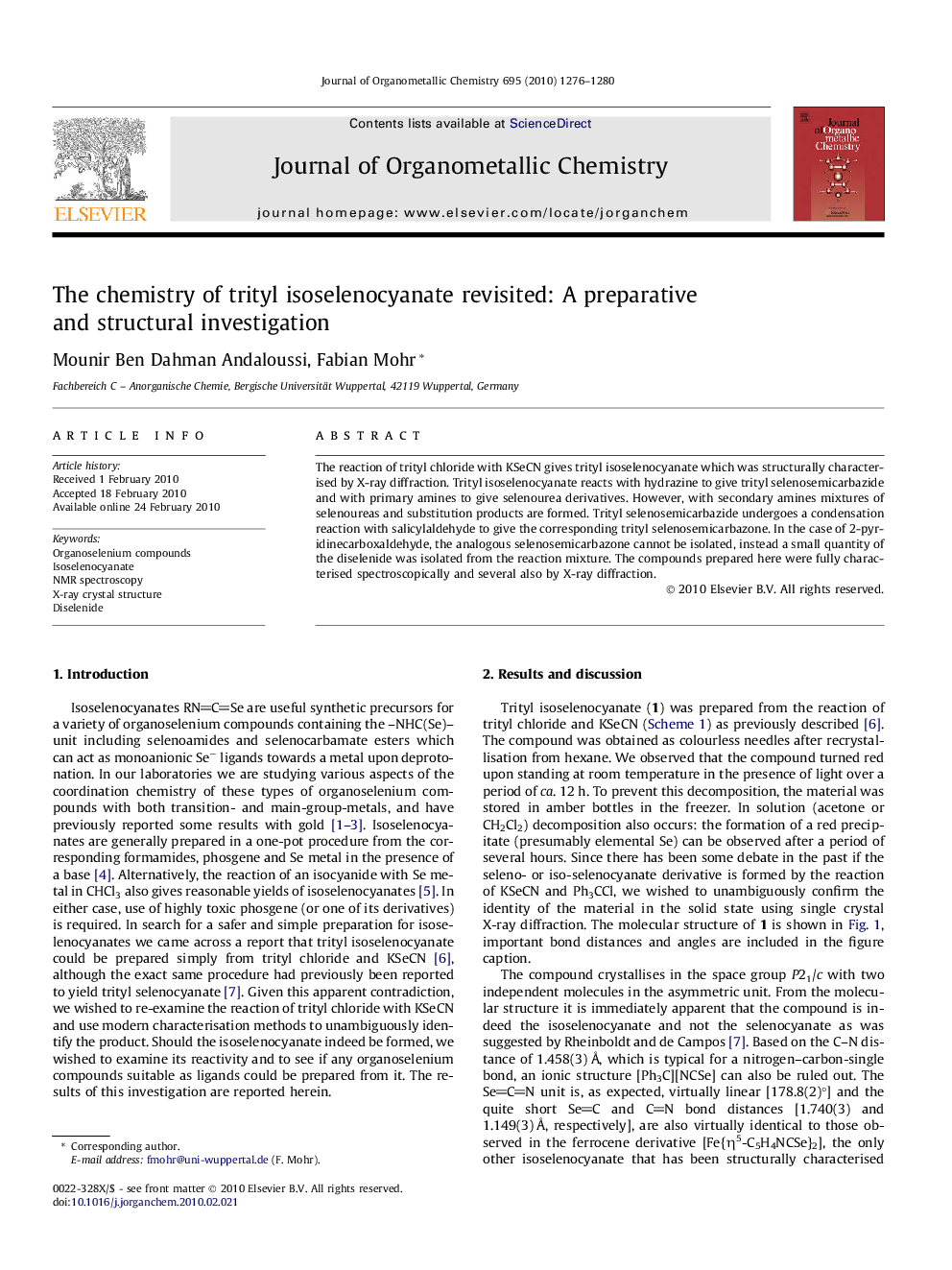| Article ID | Journal | Published Year | Pages | File Type |
|---|---|---|---|---|
| 1324184 | Journal of Organometallic Chemistry | 2010 | 5 Pages |
The reaction of trityl chloride with KSeCN gives trityl isoselenocyanate which was structurally characterised by X-ray diffraction. Trityl isoselenocyanate reacts with hydrazine to give trityl selenosemicarbazide and with primary amines to give selenourea derivatives. However, with secondary amines mixtures of selenoureas and substitution products are formed. Trityl selenosemicarbazide undergoes a condensation reaction with salicylaldehyde to give the corresponding trityl selenosemicarbazone. In the case of 2-pyridinecarboxaldehyde, the analogous selenosemicarbazone cannot be isolated, instead a small quantity of the diselenide was isolated from the reaction mixture. The compounds prepared here were fully characterised spectroscopically and several also by X-ray diffraction.
Graphical abstractThe reaction of trityl chloride with KSeCN gives trityl isoselenocyanate which was structurally characterised by X-ray diffraction. Trityl isoselenocyanate reacts with hydrazine hydrate to give trityl selenosemicarbazide. Reactions of this compound with primary and secondary amines were examined. The reaction of trityl selenosemicarbazide with aldehydes was also examined. The compounds prepared here were fully characterised spectroscopically and several also by X-ray diffraction.Figure optionsDownload full-size imageDownload as PowerPoint slide
